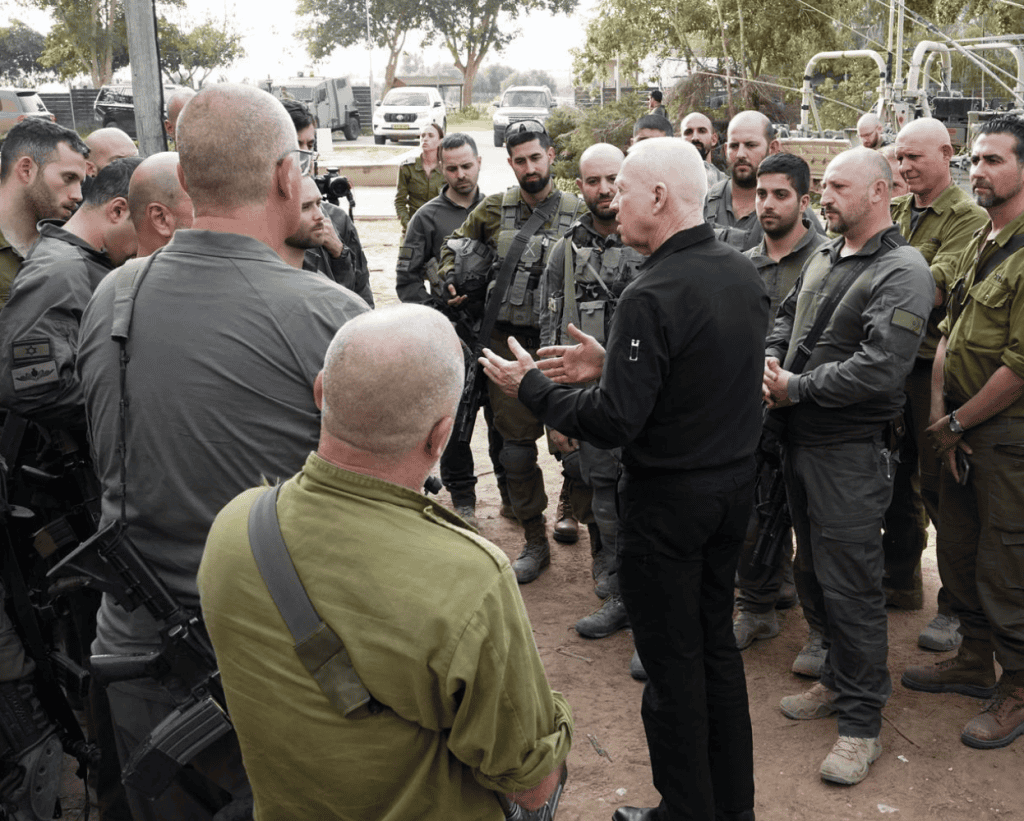
Hezbollah continued to escalate attacks on Israel on December 28, targeting border communities across the northern Galilee and launching a drone at Israel. The IDF said that a drone caused sirens to sound in the Krayot north of Haifa, an area twenty miles south of the Lebanon border that is home to tens of thousands of Israelis. The IDF said the drone was intercepted by air defenses.
The drone threat was part of a larger series of attacks by Hezbollah on December 27 and 28. The attacks began in the morning several miles east of the Mediterranean along Israel’s border with Lebanon. Israel has evacuated all of the communities near the Lebanese border in the wake of attacks in October. With most civilians evacuated and IDF troops concentrated along the border, Hezbollah attacks into Israel often do not result in civilian casualties.
The IDF carried out retaliatory strikes in response to Hezbollah attacks which expanded to areas near Metulla and the Golan on December 28. The IDF said that “a large number of launches were carried out from the towns of Ayta ash Shab and Ramyeh in southern Lebanon toward Israeli territory. Since this morning, IDF aircraft, tanks and artillery have been used to strike Hezbollah terror infrastructure in those areas.” Israel struck a Hezbollah military compound as well as a terrorist squad that was attempting to launch an anti-tank missile. “In addition, a terrorist squad hiding inside a residence from which launches were carried out toward Israeli territory earlier today was also struck,” the IDF said. Hezbollah has used anti-tank missiles in numerous attacks against northern Israel over the last two and a half months.
The escalation along the border in Lebanon comes as the IDF continues operations in Gaza. Although the IDF has not said the operations are transitioning to a lower intensity conflict, there is increased debate in Israel about the next phase of the war. In Gaza, there is also an increased focus on civilian casualties and investigations into several incidents in which civilians have been killed.
The Chief of Staff of the Israel Air Force Brig. Gen. Omer Tischler provided details on the methods the IAF uses in carrying out precision strikes in Gaza. He said on December 27 that “our planning principles include: Striking targets based on intel, and military necessity for close air support; evacuation efforts: They enable us to strike and maneuver in areas with minimal civilian presence; selecting the right munitions to minimize collateral damage: This allows us to accurately strike Hamas even though it operates within civilian areas; real-time monitoring: During the strike, we are monitoring the target area. If it does not comply with our Standard Operating Procedures, we will abort.” He also clarified that Israel has used unguided bombs in Gaza, and that they have been used in accurate strikes. IDF spokesperson Rear Admiral Daniel Hagari also said on December 27 that Israel is “acting with caution and care to the civilians in Gaza who are also suffering in this war, that Hamas inflicted on us all.”
The discussion about civilian casualties in Gaza came as the IDF released findings from the investigation into the killing of three Israeli hostages by IDF forces in mid-December. The mistake occurred when the hostages emerged from buildings in Gaza in the Shujaiya neighborhood where the IDF had been fighting against Hamas, and the IDF troops mistakenly shot the hostages. “From the investigation and analysis of the findings and aerial footage of the area, it was revealed that the hostages were walking shirtless, and one of them was waving a white flag, standing at a point with limited visibility relative to the position of the soldier that fired the shot,” the IDF said.
The findings of the investigation included several conclusions, including that “there was insufficient awareness among the forces in the field in the case of hostages reaching IDF forces, or when the forces would encounter hostages during the clearing of buildings as part of combat and not as part of a special operation to free hostages.”
The release of the investigation also coincided with Israel’s Minister of Defense meeting with members of the IDF’s 98th Division, which is fighting in Khan Yunis. “The missions that our forces are carrying out in Khan Younis are unprecedented – our forces reach areas that we have never been before, taking over control rooms and eliminating terrorists,” he said. Israel expanded operations around southern Gaza this week, including in Khan Yunis. The battle in Khan Yunis has targeted Hamas command centers and other terrorist infrastructure.







